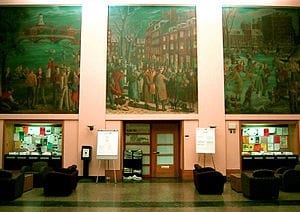The White House website kicked off a new feature this week, called Advise the Advisor, in which a senior staff member at the White House will post a YouTube video on a particular subject, asking the public to weigh in on that topic via a form.
The very first such topic is one near and dear to our hearts: American Innovation. Here’s the video of David Plouffe asking how to encourage innovation and get rid of roadblocks:
The form only allows 2,500 characters, which really isn’t that much. I ended up sending in two separate answers due to the space constraint. The first answered one of the questions posed:
What are the obstacles to innovation that you see in your community?
And here is the answer I provided:
Research on economic growth has shown time and time again the importance of basic innovation towards improving the standard of living of people around the world. Economist Paul Romer‘s landmark research into innovation highlighted the key factor in economic growth is increasing the spread of ideas.
Traditionally, many people have considered the patent system to be a key driver for innovation, but, over the last few decades, research has repeatedly suggested that this is not the case. In fact, patents more frequently act as a hindrance to innovation rather than as a help to it. Recent research by James Bessen & Michael Meurer (reviewing dozens of patent studies) found that the costs of patents far outweigh the benefits.
This is a problem I see daily as the founder of a startup in Silicon Valley — often considered one of the most innovative places on earth. Patents are not seen as an incentive to innovation at all. Here, patents are simply feared. The fear is that anyone doing something innovative will be sued out of nowhere by someone with a broad patent. A single patent lawsuit can cost millions of dollars and can waste tons of resources that could have gone towards actual innovation. Firms in Silicon Valley tend to get patents solely for defensive purposes.
The problem is twofold: First, the rationale for the patent system (that it incentivizes innovation) ignores the true incentive for innovation: need and the market for products. Research by Eric von Hippel highlighted that there is almost no evidence that patents increase incentives for actual innovation. In fact, his research has shown that a more collaborative, open innovation model significantly outperforms a system of patent monopolies.
The second problem is that patents assume that innovation is a “flash of genius” concept, rather than an ongoing process. Historic research has shown that “big breakthroughs” in innovation almost always come from many different parties, all advancing at around the same time. A patent to the first person who does “step A” puts a block or a toll on all other parties working on moving to step B. And if someone then gets a patent on “step B,” it creates a toll on step C. In economics, this is known as the hold-up problem and it has been shown to be quite significant.
I am running out of space, but will submit a second note with steps to be taken. I am happy to provide specific references to all of the research I mentioned above (plus lots more research).
And the second one responds to the question:
And what steps can be taken to remove them?










